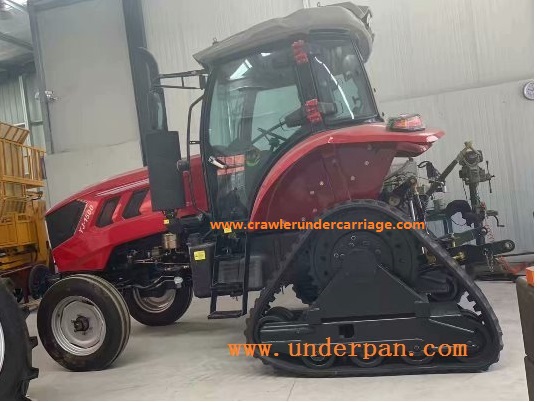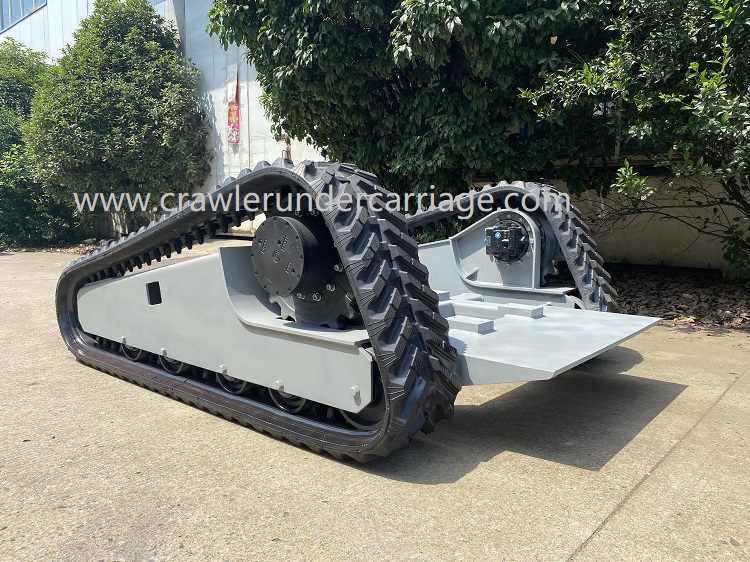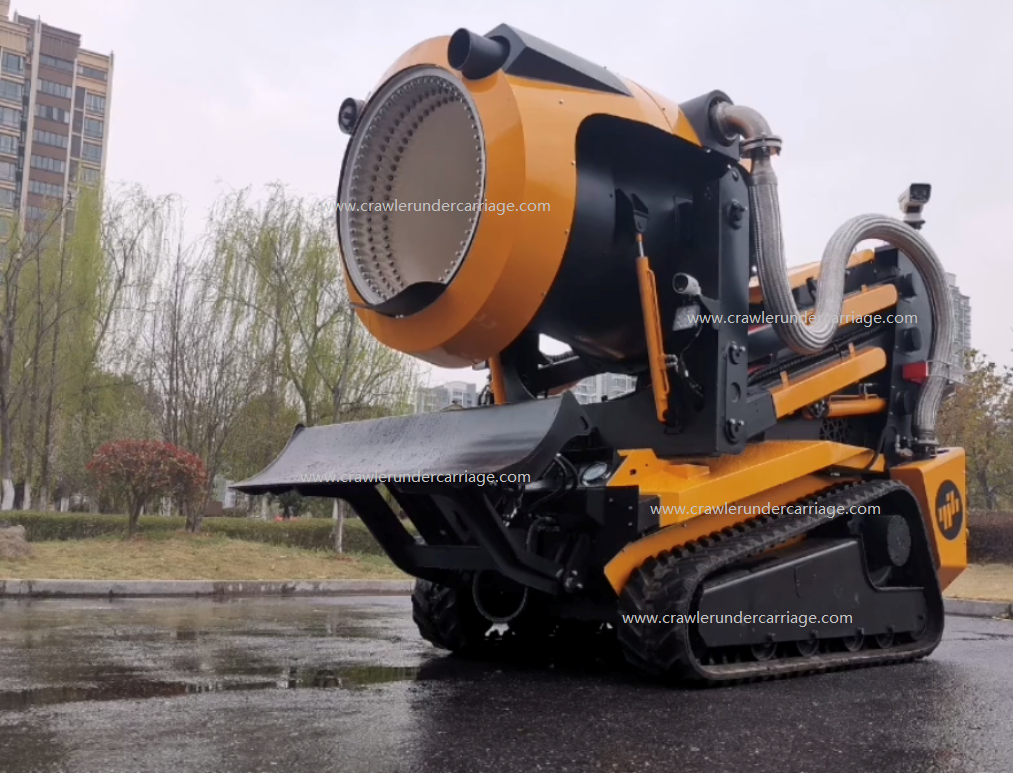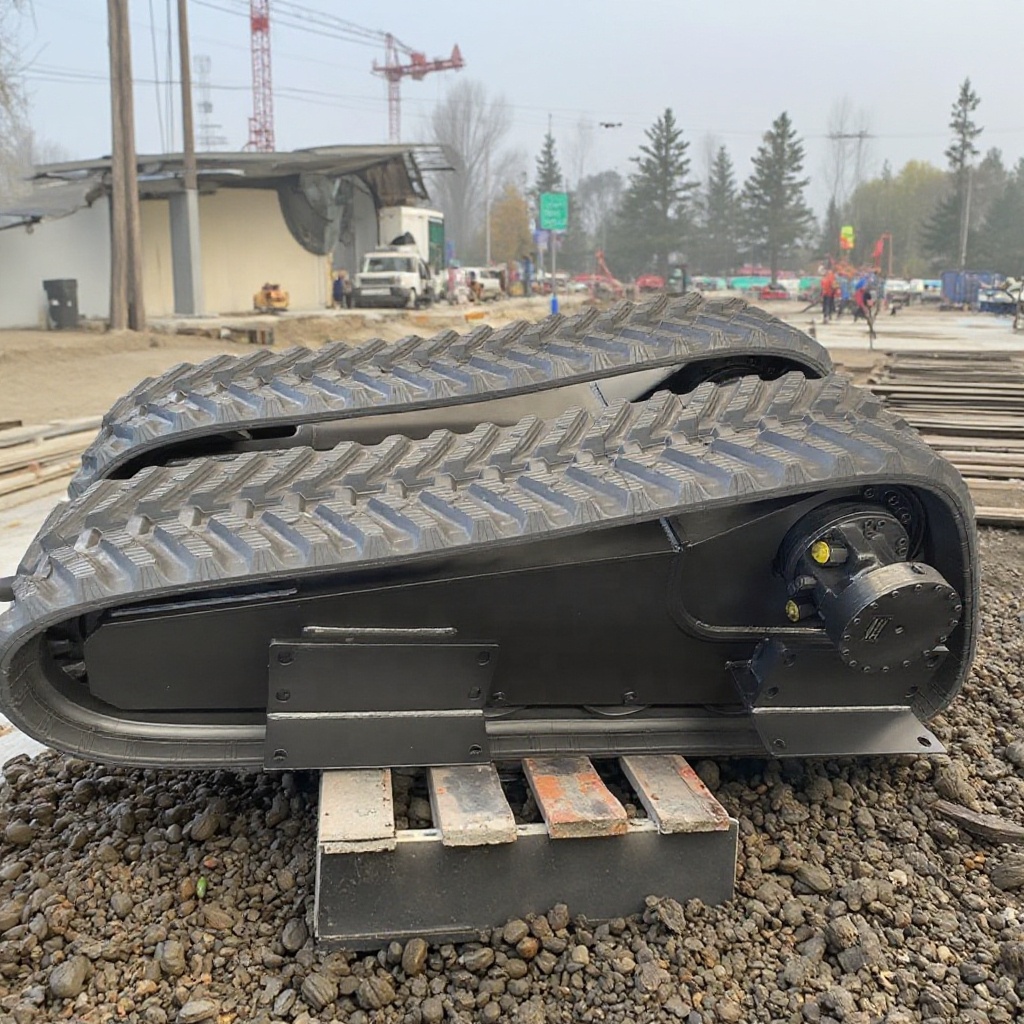The triangular crawler undercarriage, with its unique three-point support structure and crawler movement method, has extensive applications in the field of mechanical engineering. It is particularly suitable for complex terrains, high loads, or scenarios with high stability requirements. The following is an analysis of its specific applications and advantages in different machinery:
1. Special Vehicles and Construction Equipment
Application Scenarios:
- Snow and Swamp Vehicles:
Wide triangular tracks distribute pressure, preventing the vehicle from sinking in soft snow or swamps (such as the Swedish Bv206 all-terrain vehicle).
-Agricultural Machinery:
Used for slope orchard harvesters and rice paddy operation vehicles, reducing soil compaction and adapting to muddy terrain.
-Mining Machinery:
Hinged triangular track chassis can flexibly turn in narrow mine tunnels, capable of bearing the heavy load of ore transportation vehicles.
Advantages:
- The ground pressure is low (≤ 20 kPa), to avoid damaging the surface.
- The combination of articulated body and triangular tracks is used, suitable for rough terrains.
2. Rescue and Emergency Robots
Application Scenarios:
- Earthquake/Flooding Search and Rescue Robots:
For instance, the Japanese Active Scope Camera robot, which climbs over rubble using triangular tracks.
- Firefighting Robots:
Can move stably in explosion sites or collapsed buildings, equipped with water cannons or sensors.
Advantages:
- The obstacle clearance height can reach 50% of the crawler's length (such as crossing stairs, broken walls).
- Explosion-proof design (rubber crawler + fire-resistant material).
3. Military and Security Equipment
Application scenarios:
- Unmanned Ground Vehicles (UGV):
For example, the "TALON" bomb disposal robot in the United States, with triangular tracks that can adapt to battlefield ruins and sandy terrain.
- Border Patrol Vehicles:
For long-term patrols in mountainous or desert areas, reducing the risk of tires being punctured.
Advantages:
- Highly concealed (electric drive + low-noise tracks).
- Resistant to electromagnetic interference, suitable for nuclear, biological and chemical contaminated areas.
4. Polar and Space Exploration
Application scenarios:
- Polar research vehicles:
Wide tracks are designed for driving on icy surfaces (such as the Antarctic snow vehicle).
- Lunar/Mars vehicles:
Experimental designs (such as NASA's Tri-ATHLETE robot), using triangular tracks to cope with loose lunar soil.
Advantages:
- The material maintains high stability in low-temperature environments (such as silicone tracks).
- It can adapt to terrains with extremely low friction coefficients.
5. Industrial and Logistics Robots
Application Scenarios:
- Heavy-duty material handling in factories:
Moving across cables and pipes in chaotic workshops.
- Nuclear power plant maintenance robots:
Performing equipment inspections in radiation zones to prevent wheel slippage.
Advantages:
- High-precision positioning (with no sliding error of the tracks).
- Corrosion-resistant tracks (such as polyurethane coating).
6. Innovative Application Cases
- Modular Robots:
For example, the Swiss ANYmal quadruped robot equipped with a triangular track attachment can switch between wheel and track modes.
- Underwater Exploration Vehicle:
The triangular tracks provide thrust on the soft mud on the seabed, preventing it from getting stuck (such as the auxiliary chassis of ROV).
7. Technical Challenges and Solutions
| Problem | Countermeasures |
| Tracks wear out quickly | Use composite materials (such as Kevlar fiber reinforced rubber) |
| Steering energyconsumption is high | Electro-hydraulic hybrid drive + energy recovery system |
| Complex terrain attitude control | Add IMU sensors + adaptive suspension algorithm |
8.Future development directions:
- Lightweighting: Titanium alloy track frame + 3D printed module.
- Intelligence: AI terrain recognition + autonomous adjustment of track tension.
- New energy adaptation: Hydrogen fuel cell + electric track drive.
Summary
The core value of the trapezoidal crawler chassis lies in "stable mobility". Its application scope is expanding from traditional heavy machinery to intelligent and specialized fields. With the advancements in materials science and control technology, it holds great potential in extreme environments such as deep space exploration and urban disaster response in the future.












